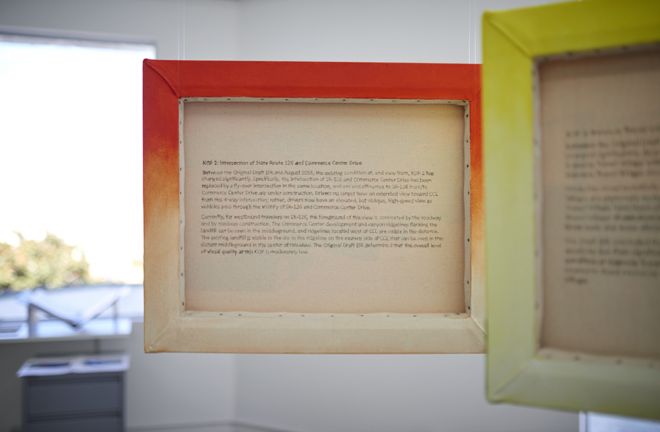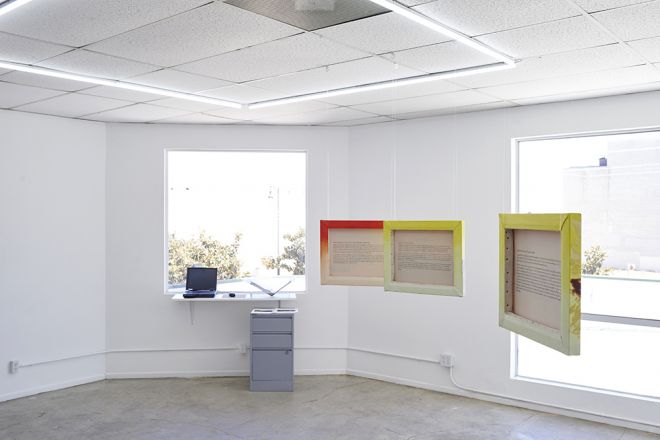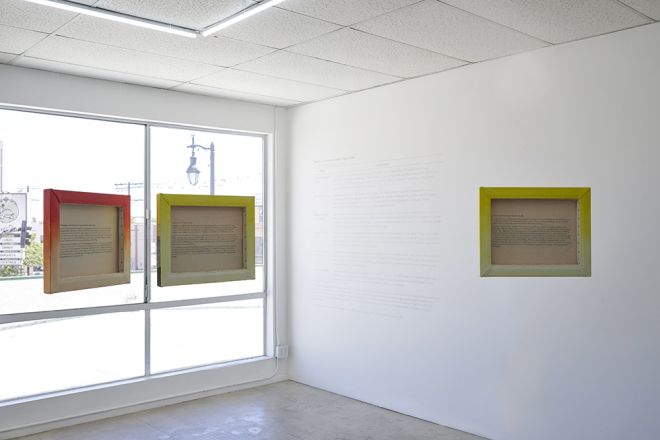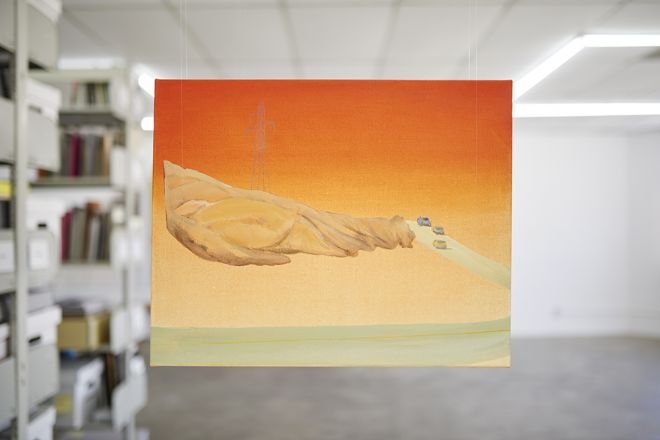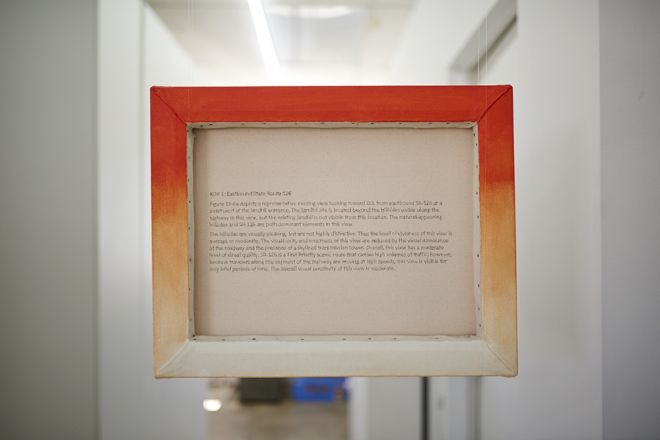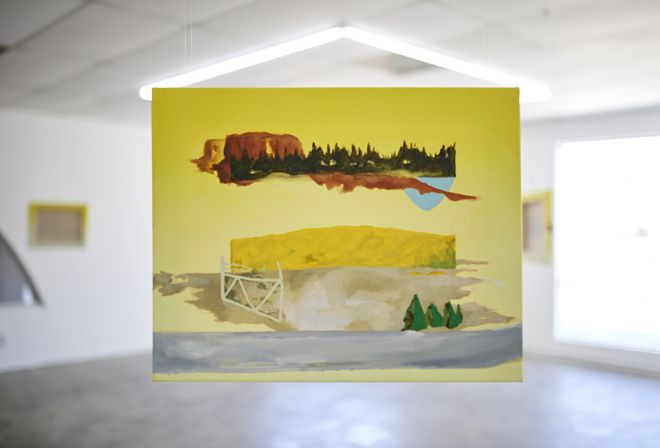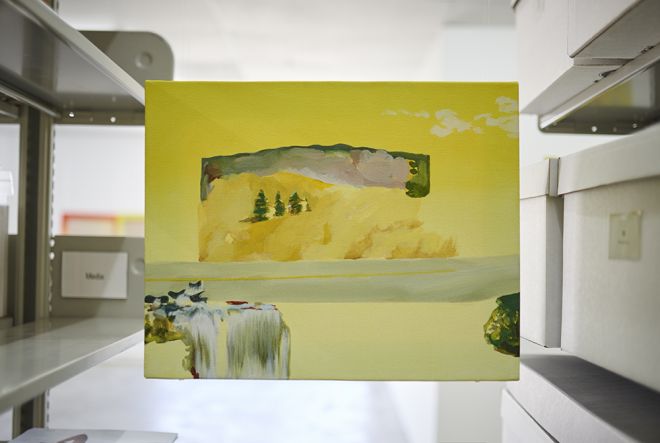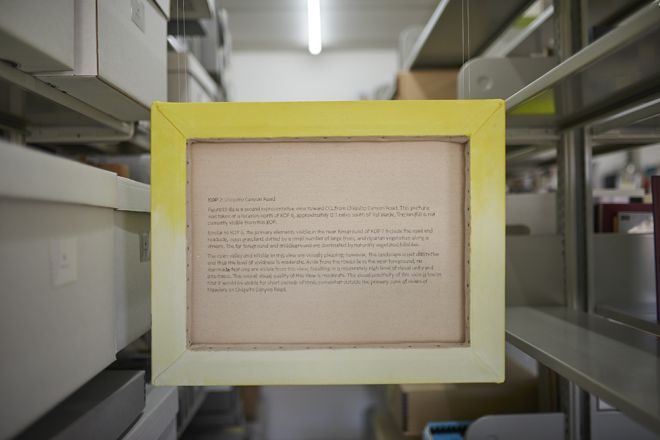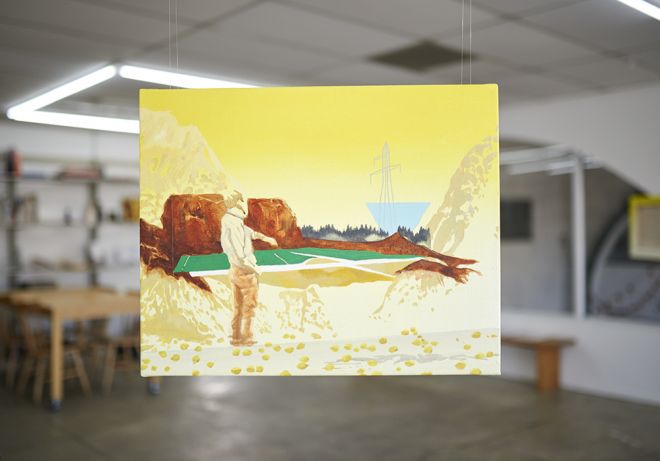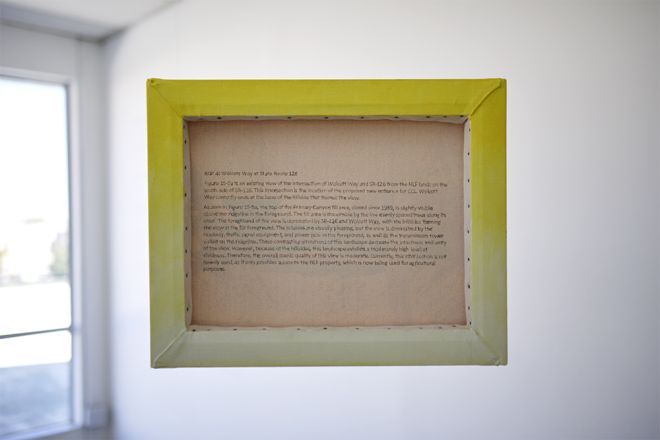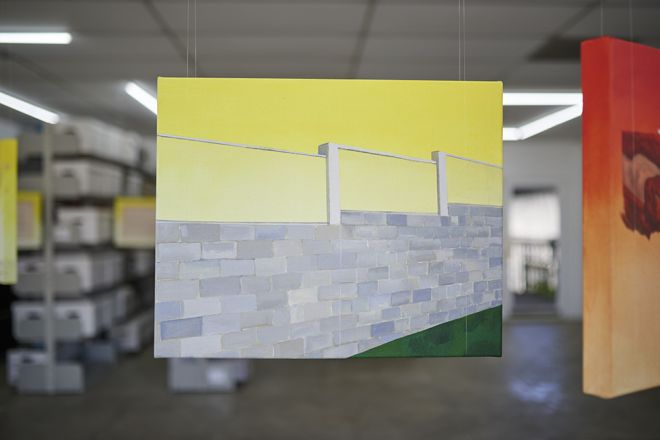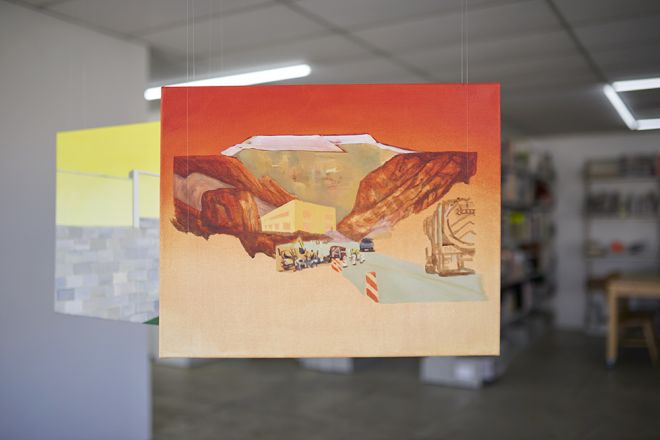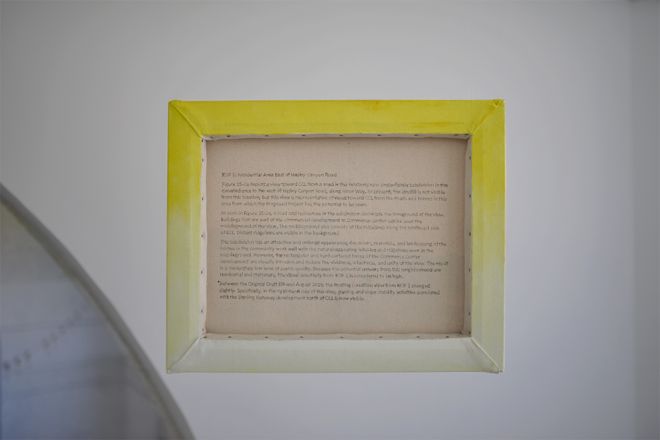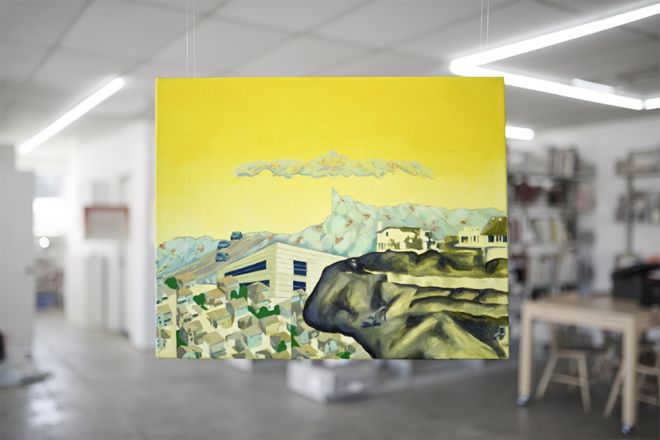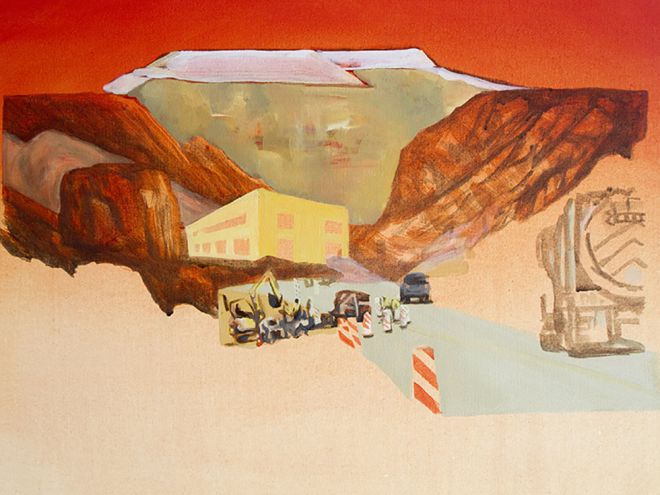
Key Observation Point by artist Susanna Battin stands as the latest in a series of works over the past decade in which the artist has investigated the Chiquita Canyon Landfill. Chiquita Canyon is located at the northern fringe of Los Angeles County. Before the landfill was incorporated as a private operation in 1972, the canyon was used as an ungoverned dumping ground. Waste Connections, Inc. purchased the industrial site in 2009 and it has since become one of the largest and oldest operational landfills in California, receiving 12,000 tons of waste daily from the greater Los Angeles area.
Key Observation Point takes its name from the landfill’s 2017 Environmental Impact Report. One chapter in the report is tasked to assess the industrial site’s scenic beauty using a metric termed the ‘landscape scenic quality scale.’ Developed by a cohort of landscape architects and foresters during the late 20th century, the scale measures the visual quality of a site’s natural and built features as a means of environmental protection. The scale operates by breaking down physical space into the pictorial language of foreground, middle-ground and background. This process then serves to isolate what are deemed ‘key observation points’ to optimally view a physical space, determined by a rubric that measures ‘vividness, intactness, and unity.’
Battin interrogates seven views towards the landfill that the report singles out as ‘key observation points,’ as determined through the logic of the scale. The seven painted images of the exhibition are the result of a multi-step process Battin undertook using digital networked technologies, collage, and painting. Battin began this process by first extracting key words and phrases from the report’s scenic descriptions and querying them through Google’s image search, in effect translating the report’s written words into images. Battin took the queried image results and consolidated them into an image archive from which she selected and translated the seven ‘key observation points’ of the landfill into digital collages. Battin’s final step was to interpret these digitally collaged images into formal landscape paintings.
Battin’s highly processed intervention seeks to examine how the report’s scientific measurement of visuality, instrumentalizes the very act of looking into a bureaucratic endeavor. In Key Observation Point, Battin suggests that within this aesthetic undertaking to measure landscape value, lies a particular form of violence that aspires to reduce the presence of place into a consumable view. Susanna Battin uses strategies of research and visual art to investigate landscapes she has personal and intimate ties to. Her work is specifically focused in how the Romantic conception of nature continues to permeate contemporary politics, ecology, and dictate the human relation to the land. Battin’s previous work about the Chiquita Canyon Landfill began in 2009, when she lived in the adjacent canyon town of Val Verde. This past work has taken form as performance, video, writing, social practice, and site interventions. Her work has shown at Tiger Strikes Asteroid, Pieter Space, Angel’s Gate Cultural Center, Human Resources, PhotoLA, Colorado College, OPAF, and abroad. In 2018 she was the visiting artist in residence at Turning Point School, Culver City, and Los Feliz Charter School for the Arts, where she led exercises in landscape visualization and storytelling. She is an active member of Mother Ditch, NAVEL, and the reading group, OOLA. Susanna Battin lives and works in Los Angeles. http://www.susbatt.com/
Exhibition Aug 31 - Sept 28th
Opening Aug 31 6-10 PM
L.A.C.A
709 N Hill Street
Suite 104/8 (upstairs)
90012
Hours
Wednesday-Saturday
12pm–6pm
Monday-Sunday
Appointment only
Los Angeles Contemporary Archive (LACA) is committed to making our programs and events accessible to everyone who wants to attend and participate. As our facility is limited to staircase access, we extend our best efforts to provide accommodations or assistance. Please feel free to contact LACA prior to any events or for site visits.
Photographs: Sean Sprague
